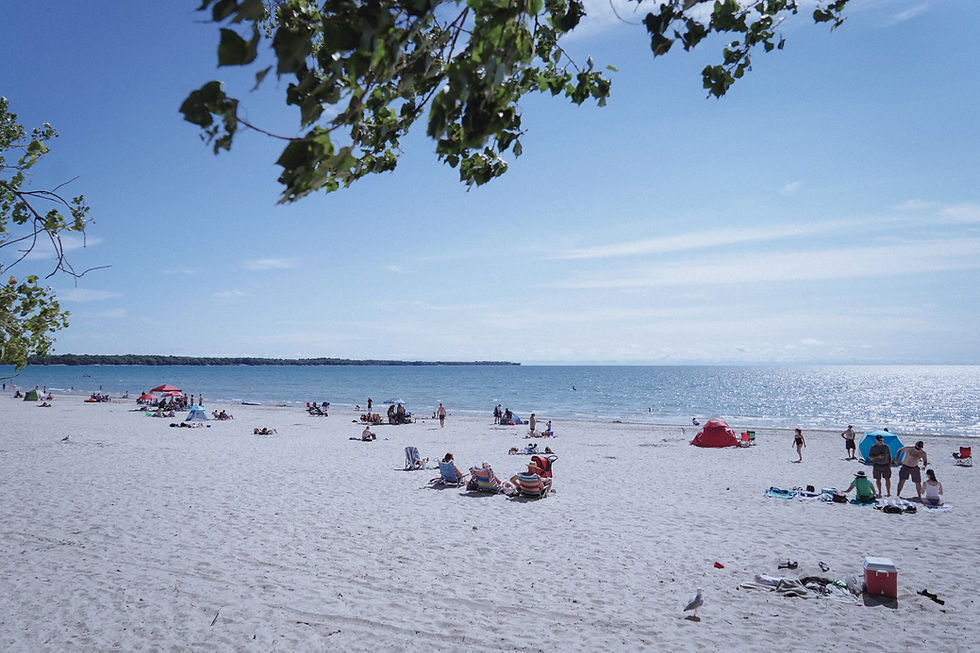Preventing Lower Back Pain for Beach Goers: Stay Comfortable While You Soak Up the Sun
- Sara Mikulsky
- Aug 9
- 2 min read
Beach days are the highlight of summer — sun, sand, swimming, and relaxation. But for many people, a fun day at the shore can lead to unexpected lower back pain. Whether it’s from lugging heavy beach gear, lounging in awkward positions, or diving into beach games without a warm-up, your lower back can take a hit.
As a physical therapist, I see a spike in back complaints every summer, often from activities that seem harmless. The good news? With a little planning and a few smart movement strategies, you can enjoy your time at the beach without paying for it later.

🏖️ Common Causes of Back Pain at the Beach
Poor posture while sitting or lounging on towels
Carrying heavy chairs, umbrellas, and coolers with poor body mechanics
Sudden or unprepared physical activity (volleyball, swimming, etc.)
Walking barefoot on uneven sand
Long periods of inactivity without stretching
💡 6 Physical Therapy-Approved Tips to Protect Your Back
1. Use Proper Lifting Mechanics: When loading or unloading beach gear, bend at your knees and hips — not your back. Keep items close to your body and avoid twisting while lifting. Use a cart or backpack-style beach chair to distribute weight evenly.
2. Choose Supportive Seating: Spending hours lying on a flat towel or slouched in a low chair can strain your lower back. Opt for a chair with a supportive backrest or bring a lumbar roll (a rolled-up towel works too) to support your spine while seated.
3. Don’t Skip the Warm-Up: Jumping into a game of beach volleyball or taking a long walk on the sand without warming up can stress your spine. Take a few minutes to gently stretch your hips, hamstrings, and lower back before getting active.
4. Take Movement Breaks: Even while relaxing, it’s important to change positions frequently. Get up and walk every 30–60 minutes to keep your joints and muscles from stiffening up.
5. Watch Your Sand Stance: Walking or running on uneven sand can overwork stabilizing muscles in the back. If you’re not used to it, start with short walks and wear supportive footwear when possible to reduce strain.
6. Stay Hydrated and Cool: Dehydration and heat exhaustion can contribute to muscle cramps and fatigue, increasing the risk of back pain. Drink plenty of water and take breaks in the shade.
🔄 When to Seek Help
If you notice persistent back pain that lasts beyond a day or two after your beach trip — especially if it worsens with movement or interferes with sleep — it’s time to get evaluated by a physical therapist. We can assess movement patterns, correct posture habits, and design a stretching and strengthening plan to keep your back strong and pain-free.
🌊
A healthy spine is the foundation of an enjoyable, active life — including carefree beach days. With just a little attention to posture, movement, and body mechanics, you can avoid back pain and focus on what really matters: fun in the sun!
If you're heading to the beach this summer and want help preparing your body or recovering from a recent injury, reach out for a consultation. We’re here to help you move better and feel your best — on and off the sand.































Great tips! I love how simple adjustments can make beach days healthier and more enjoyable. Pairing comfort with a beautiful island to visit makes the experience even better, sun, sand, and no back pain is the perfect combo!